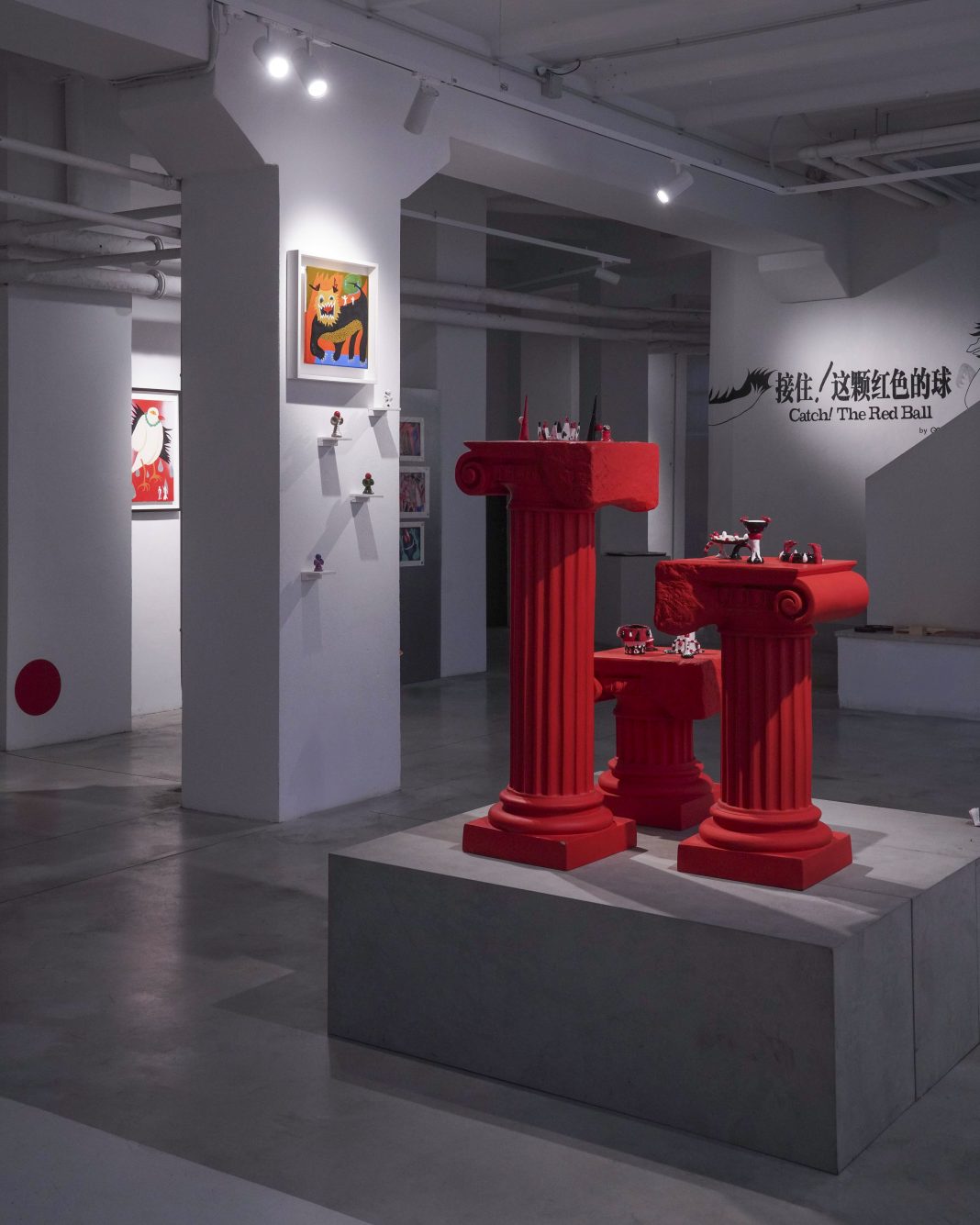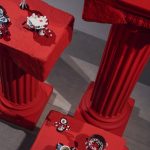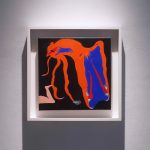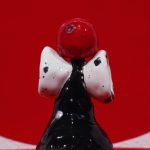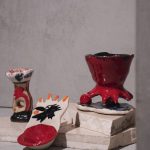Create an account
Welcome! Register for an account
La password verrà inviata via email.
Recupero della password
Recupera la tua password
La password verrà inviata via email.
-
- container colonna1
- Categorie
- #iorestoacasa
- Agenda
- Archeologia
- Architettura
- Arte antica
- Arte contemporanea
- Arte moderna
- Arti performative
- Attualità
- Bandi e concorsi
- Beni culturali
- Cinema
- Contest
- Danza
- Design
- Diritto
- Eventi
- Fiere e manifestazioni
- Film e serie tv
- Formazione
- Fotografia
- Libri ed editoria
- Mercato
- MIC Ministero della Cultura
- Moda
- Musei
- Musica
- Opening
- Personaggi
- Politica e opinioni
- Street Art
- Teatro
- Viaggi
- Categorie
- container colonna2
- container colonna1
Catch! The Red Ball
Gou is an Illustrator, ceramic artist, musician. Founder of MegaLuck Studio, her own design and art studio. At N51 you will be transported into her world on the back of a Dragon.
Comunicato stampa
Segnala l'evento
The artistic journey of Gou is a vivid tapestry of her sensibility, expressed
through painting, sculpture and music. The artist eschews the conventional
path of aligning herself with established groups or artistic movements, a
practice deeply rooted in Chinese traditional and contemporary art, instead,
her focus is on a personal exploration of sensitivity, charting a course that
diverges distinctly from collective norms, emphasizing an individualistic
approach to art.
At N51 you will be transported into her world on the back of a Dragon.
Delving into the heart of Gou’s exploration, we encounter The ‘Fragile Kendama
Angels’ project. Started in 2022, Gou takes the traditional folk Kendama toys
from Japan, reimagining them as delicate ceramic sculptures.
Gou creates a striking contrast between the toy’s inherent durability and the
fragility of ceramic. Similarly, the ‘Tears Project’ captures the fleeting essence
of tears, transforming these evanescent symbols of raw emotion into lasting
ceramic forms, from liquid to solid.
In China traditionally speaking, to show emotions is a reflection of an
unneeded humanity and could be seen as a weakness to be avoided. Through
these projects, Gou not only challenges traditional perceptions of strength
and fragility but also invites a reevaluation of the cultural norms surrounding
the expression of emotion, underlining the power of art to evoke a profound
reconsideration of vulnerability and resilience. The significance of emotions
in Chinese social life is quite different than in the western part of the world
and Chinese culture does not recognize itself as utilizing the emotional life
of individuals in the service of the social order. As a result, the meaning of
the person and the relationship between the person and society take on a
particular Chinese form, quite unlike our own. In order to understand these
Chinese forms without ethnocentrism, we can say that emotions are not
thought of as significant in social relationships. An emotion is never the
legitimizing rationale for any socially significant action, and there is no cultural
theory that social structure rests on emotional ties. The Chinese emphasize
the superior importance of what is outside the individual and beyond the
individual’s scope, of what was present before the individual and of what will
continue when the individual has come and gone. Emotion is characteristic of
the individual, but it is not a significant aspect of the person.
This is complemented by her involvement with Naja Naja, a music duo formed
in 2020, which showcases her creative versatility and adds an auditory layer
to her body of work, enriching the visual experience and deepening the
emotional resonance.
Kendama: what it is?
This game holds a place in the history of several countries, known as a ‘Cup
and ball game.’ From North America to South America, as well as in Spain,
Portugal, Germany, France, England, the game is known by various names—
Boliche, Balero, Bilboquê, Emboque, Bilbo Catcher, Fang die Kugel, Coca, and
Perinola—featured in historic tales.
However, Japan has not only maintained its popularity but also made it famous.
Its history in Japan is linked to the Edo period, though its exact origin is unclear.
It might have been introduced by the Portuguese or Chinese immigrants, or
even originated in France, as King Henry III was known to play it—its popularity
surged under Louis XV.
Contrary to the belief that it is exclusively a children’s game, it also served as a
drinking game, first mentioned in the 1777 Japanese encyclopedia ‘Kiyusyoran‘.
In the adult version of the game whoever lost the toss was obliged to drink.
The modern version is called ‘Nichi-getsu Ball’ (Sun and Moon Ball) and was
invented in Hiroshima. A patent application was made in 1918 and registered in
1919. It is from this design from which the modern Kendama is derived.
through painting, sculpture and music. The artist eschews the conventional
path of aligning herself with established groups or artistic movements, a
practice deeply rooted in Chinese traditional and contemporary art, instead,
her focus is on a personal exploration of sensitivity, charting a course that
diverges distinctly from collective norms, emphasizing an individualistic
approach to art.
At N51 you will be transported into her world on the back of a Dragon.
Delving into the heart of Gou’s exploration, we encounter The ‘Fragile Kendama
Angels’ project. Started in 2022, Gou takes the traditional folk Kendama toys
from Japan, reimagining them as delicate ceramic sculptures.
Gou creates a striking contrast between the toy’s inherent durability and the
fragility of ceramic. Similarly, the ‘Tears Project’ captures the fleeting essence
of tears, transforming these evanescent symbols of raw emotion into lasting
ceramic forms, from liquid to solid.
In China traditionally speaking, to show emotions is a reflection of an
unneeded humanity and could be seen as a weakness to be avoided. Through
these projects, Gou not only challenges traditional perceptions of strength
and fragility but also invites a reevaluation of the cultural norms surrounding
the expression of emotion, underlining the power of art to evoke a profound
reconsideration of vulnerability and resilience. The significance of emotions
in Chinese social life is quite different than in the western part of the world
and Chinese culture does not recognize itself as utilizing the emotional life
of individuals in the service of the social order. As a result, the meaning of
the person and the relationship between the person and society take on a
particular Chinese form, quite unlike our own. In order to understand these
Chinese forms without ethnocentrism, we can say that emotions are not
thought of as significant in social relationships. An emotion is never the
legitimizing rationale for any socially significant action, and there is no cultural
theory that social structure rests on emotional ties. The Chinese emphasize
the superior importance of what is outside the individual and beyond the
individual’s scope, of what was present before the individual and of what will
continue when the individual has come and gone. Emotion is characteristic of
the individual, but it is not a significant aspect of the person.
This is complemented by her involvement with Naja Naja, a music duo formed
in 2020, which showcases her creative versatility and adds an auditory layer
to her body of work, enriching the visual experience and deepening the
emotional resonance.
Kendama: what it is?
This game holds a place in the history of several countries, known as a ‘Cup
and ball game.’ From North America to South America, as well as in Spain,
Portugal, Germany, France, England, the game is known by various names—
Boliche, Balero, Bilboquê, Emboque, Bilbo Catcher, Fang die Kugel, Coca, and
Perinola—featured in historic tales.
However, Japan has not only maintained its popularity but also made it famous.
Its history in Japan is linked to the Edo period, though its exact origin is unclear.
It might have been introduced by the Portuguese or Chinese immigrants, or
even originated in France, as King Henry III was known to play it—its popularity
surged under Louis XV.
Contrary to the belief that it is exclusively a children’s game, it also served as a
drinking game, first mentioned in the 1777 Japanese encyclopedia ‘Kiyusyoran‘.
In the adult version of the game whoever lost the toss was obliged to drink.
The modern version is called ‘Nichi-getsu Ball’ (Sun and Moon Ball) and was
invented in Hiroshima. A patent application was made in 1918 and registered in
1919. It is from this design from which the modern Kendama is derived.





